Argilloberyx is an extinct genus of prehistoric marine bony fish that lived during the lower Eocene. It contains one species, A. prestwichae, known from the London Clay Formation on the Isle of Sheppey, United Kingdom. It is considered a member of the family Berycidae.
Chanopsis is an extinct genus of prehistoric freshwater bonytongue relative that lived from the late Aptian to the Albian stage of the Early Cretaceous epoch. It contains a single species, C. lombardi from the Democratic Republic of the Congo.
Bobbichthys is an extinct genus of marine ray-finned fish that lived in what is now Chile during the Oxfordian stage of the Late Jurassic epoch. It was a member of the Varasichthyidae, a family of potentially crossognathiform fish.

Australosomus is an extinct genus of prehistoric ray-finned fish that lived during the Early Triassic epoch in what is now Greenland, Kenya, Tanzania, Madagascar, South Africa and Canada.
Sakamenichthys is an extinct genus of prehistoric bony fish that lived during the Early Triassic epoch in what is now Madagascar. Fossils were recovered from beds of the Middle Sakamena Formation of the Beroroha basin in the southern part of the island.
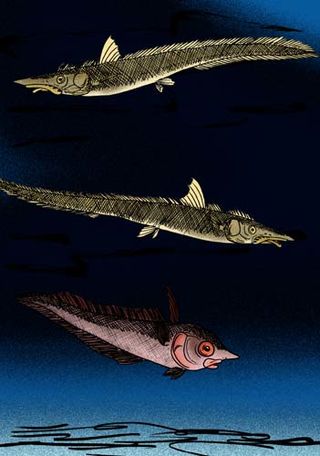
Laytonia is an extinct genus of prehistoric halosaur that lived in deep water off the North American Pacific Coast from the Zemorrian Epoch until during the Upper Miocene subepoch, when tectonic uplift effectively destroyed the genus' habitat by making the deep water too shallow.
Africentrum is an extinct genus of prehistoric soldierfish that lived during the Upper Miocene subepoch of what is now Malta. It contains a single species, A. melitense. It has been either recovered as the sister genus to Myripristis or in a polytomy with all the other genera in the subfamily.
Xyne is an extinct genus of prehistoric herring that lived during the Upper Miocene subepoch.

Bolbocara is an extinct genus of rattail that lived during the Upper Miocene subepoch of Southern California. It contains a single species, B. gyrinus. It may be related to the extant genus Bathygadus.
Tunita is an extinct genus of prehistoric mackerel that lived during the Upper Miocene subepoch of Southern California.
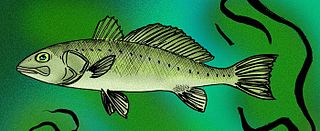
Lompoquia retropes is an extinct genus of ray-finned fishes belonging to the family Sciaenidae, the drums. These fishes lived what is now Southern California during the Upper Miocene subepoch.
Ioscion morgani is an extinct prehistoric bony fish that lived during the Upper Miocene subepoch of what is now Southern California. It is primarily known from incomplete fossils, such as the holotype, which consists of a broken backbone. Although the head is unknown, enough of the animal's anatomy suggests a relationship with the jackfishes of Carangidae.
Achrestogrammus is an extinct genus of prehistoric Scorpaeniformes fish that lived during the Upper Miocene subepoch of California.
Evesthes is an extinct genus of prehistoric bony fish that lived during the Upper Miocene subepoch.
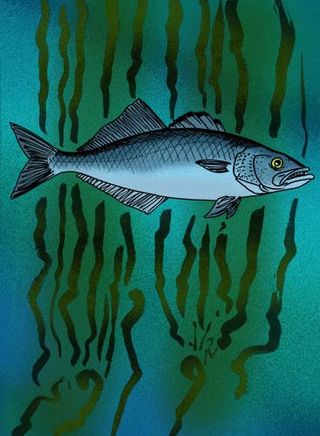
Lophar miocaenus is an extinct bony fish almost identical in form to the living bluefish, Pomatomus saltatrix, differing in its dentition, which consisted of "thick, conical subequal teeth" instead of the sharp, slender teeth and canines seen in bluefish. L. miocaenus lived during the Upper Miocene subepoch of Southern California.
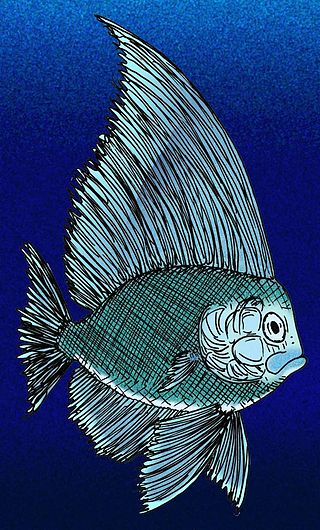
Absalomichthys velifer is an extinct, prehistoric manefish that lived during the Upper Miocene of what is now Southern California. Its dorsal fin was huge in comparison with living species. It is known from the Monterey Formation of Los Angeles County.
Avitolabrax is an extinct genus of prehistoric marine perciform fish that lived during the early part of the Miocene epoch. It has a single known species, A. denticulatus, from the Siramizu Formation of Fukushima, Japan.
Properca is an extinct genus of prehistoric marine perciform fish that lived in Europe throughout much of the Cenozoic, from the Paleocene to the Miocene epochs.
Bregmacerina is an extinct genus of prehistoric marine ray-finned fish, most likely a codlet, that lived during the early part of the Miocene epoch. It contains a single species, B. antiqua, from the Burdigalian Sakaraul Horizon Formation of North Caucasus, Russia.
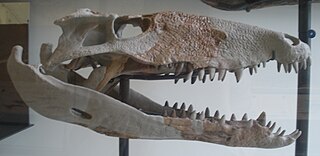
Sebecidae is an extinct family of prehistoric terrestrial sebecosuchian crocodylomorphs, known from the Late Cretaceous and Cenozoic of Europe and South America. They were the latest surviving group of non-crocodilian crocodylomorphs.






